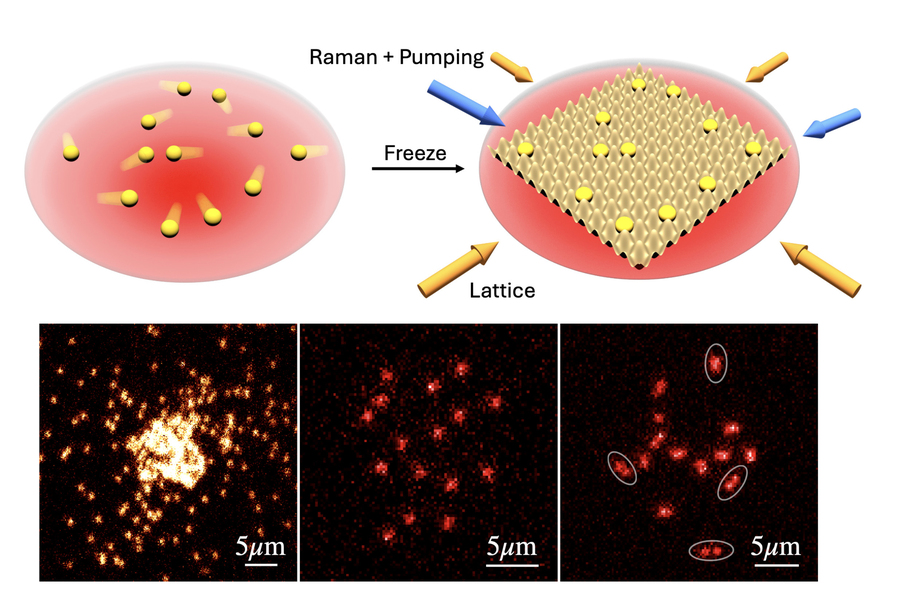Scientists now have a new approach to study never-before-seen quantum phenomena. Physicists from the Massachusetts Institute of Technology have produced the first images of atoms freely interacting in space, showing correlations that had been predicted in theory but never directly photographed before.
The team’s Atom-Resolved Microscopy is done in this way. Atoms are allowed to move about and interact freely. The researchers then turn on a lattice made of light that, for a fraction of a second, freezes the atoms. At the same time, another laser system illuminates the atoms, creating a picture before the atoms are allowed to move again.
The team used two atomic gases, one made of sodium atoms and the other of lithium atoms. The two behave in different ways. The sodium would act like a boson, which means particles can end up in the same quantum state and act like a single quantum wave. Lithium was a fermion gas, meaning only one atom at a time can be in a specific quantum state. This gave rise to these atoms pairing up, like electrons do in superconductors.

The bottom images show the sodium gas acting like bosons, lithium weakly interacting (so each atom stays alone), and lithium strongly interacting, forming pairs.
Image Credit: Yao et al. 2025, courtesy of the researchers.
“We are able to see single atoms in these interesting clouds of atoms and what they are doing in relation to each other, which is beautiful,” senior author Professor Martin Zwierlein said in a statement.
The team was able to track the boson quantum wave directly, which has been used to explain the wave-like nature of states of matter, such as the Bose-Einstein condensates. At the same time, seeing behaviors predicted in fermions (such as the pairing) that have not been directly seen before feels like a revolution in studies of the quantum world.
“This kind of pairing is the basis of a mathematical construction that people came up with to explain experiments. But when you see pictures like these, it’s showing in a photograph, an object that was discovered in the mathematical world,” study co-author assistant professor Richard Fletcher added. “So it’s a very nice reminder that physics is about physical things. It’s real.”
Next, the team is going to look at weirder phenomena like the quantum Hall physics. These are much less understood, and direct observations of atoms under similar conditions might tell us what fundamental particles actually do in those cases.
The team was co-authored by graduate researchers Ruixiao Yao, Sungjae Chi, and Mingxuan Wang.
The study is published in Physical Review Letters. The same issue showcases similar techniques by independent teams.
Source Link: First Ever Image Of “Free Floating” Atoms Snapped By MIT Scientists